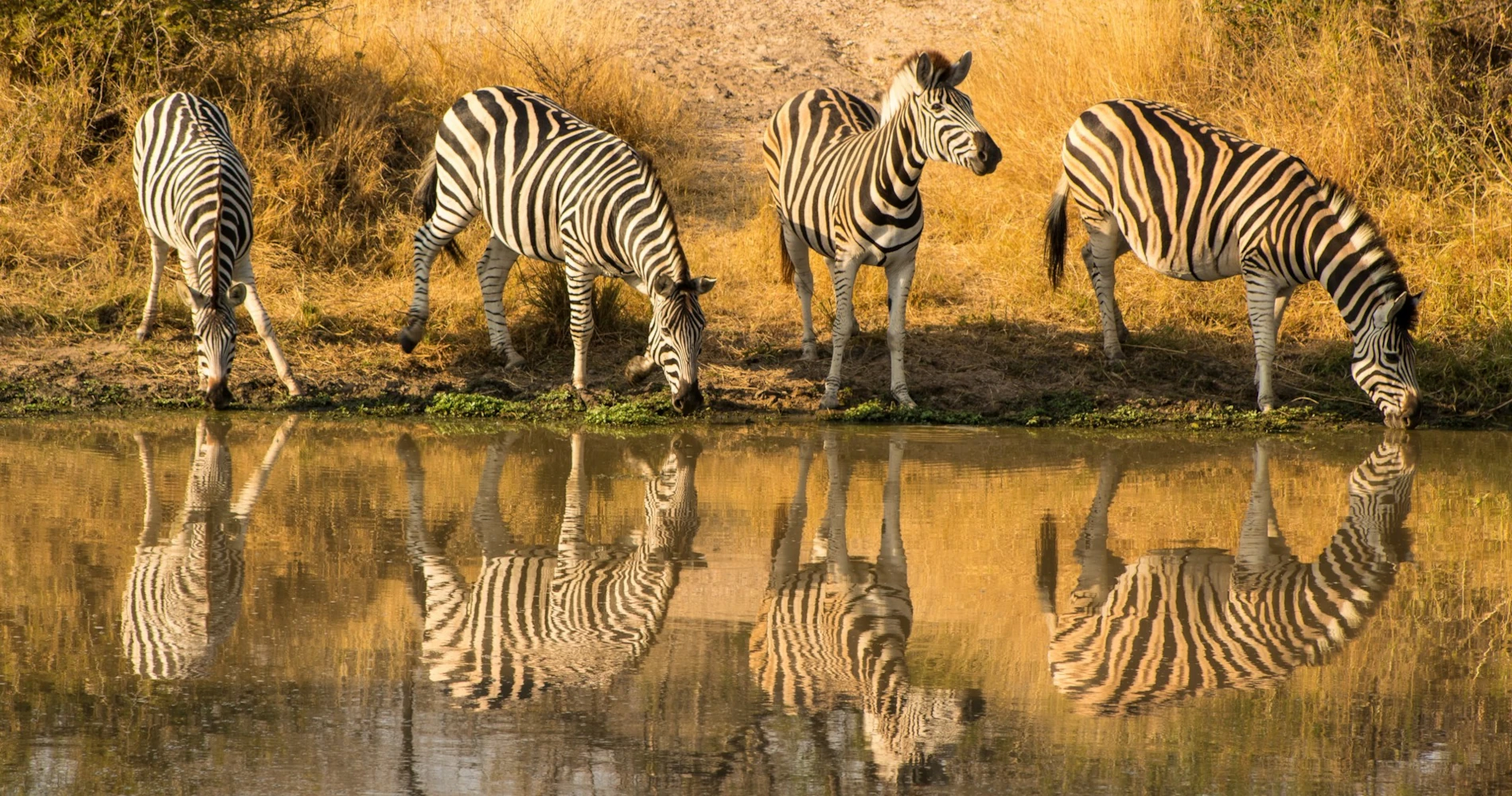Best Time to Visit Kruger National Park
Deciding when to go depends on what you want to see, the type of experience you’re looking for, and even your budget.
Here’s a complete guide to help you choose the best time to visit Kruger National Park, whether you’re after thrilling wildlife encounters, lush green landscapes, or fewer crowds.
Understanding Kruger’s Seasons
Dry Season (May to October)
The dry winter months are considered the best time for wildlife viewing in Kruger. With little to no rain, the vegetation is thinner, making animals easier to spot as they gather around waterholes and rivers.
- Weather: Mild days and cool nights, with average daytime temperatures between 24°C and 28°C.
- Wildlife: Excellent visibility and higher chances of seeing the Big Five.
- Accessibility: Roads are in good condition and malaria risk is at its lowest.
- Drawback: The landscape is dry and less green, and accommodation prices tend to be higher during peak months (July to September).
Wet Season (November to April)
The rainy summer months transform Kruger into a lush, green paradise. While spotting animals can be a bit harder due to thicker vegetation, the park becomes incredibly photogenic and full of life.
- Weather: Hot and humid, with occasional afternoon showers. Daytime temperatures can reach 35°C or more.
- Wildlife: This is the time for newborn animals, migratory birds, and stunning scenery. Birdwatching is at its best.
- Accessibility: Some gravel roads can become muddy, but most main routes remain open.
- Drawback: Higher temperatures and humidity can make midday drives less comfortable and malaria risk is at its highest.
Month-by-Month Overview
May to August
Cool, dry, and perfect for game drives. This is the classic safari period with clear skies, minimal rain, and great visibility.
September and October
Hot and dry months leading up to the rains. Excellent for wildlife as animals are still concentrated near water sources, but temperatures start rising.
November to March
The wet, green season. Expect lush landscapes, baby animals, and a lot of birdlife. Ideal for photographers and nature lovers.
April
A transitional month with pleasant weather and fewer crowds. Vegetation begins to thin out, offering a nice balance between scenery and sightings.
Choosing the Best Time for You
For the Best Wildlife Viewing
Visit June to September, when conditions are dry and animals gather around rivers and waterholes.
For Birdwatching and Photography
Come December to March, when the park is green, skies are dramatic, and migratory birds are everywhere.
For Fewer Crowds and Good Value
Try April or May, when the weather is mild, the park is quieter, and accommodation rates drop.
Additional Tips
- Book early if visiting in peak season, especially for popular camps like Skukuza or Satara.
- Pack layers, as winter mornings can be chilly but afternoons warm.
- Avoid midday drives in the summer heat; early morning and late afternoon are best for sightings.
- Check road conditions and malaria updates before your trip.
Final Thoughts: Kruger is Worth Visiting All Year Round
Every season in Kruger offers something special. The dry months bring unbeatable game viewing, while the green season shows the park’s wild beauty in full bloom.
For a complete breakdown of camps, routes, and safari tips, buy our detailed Kruger National Park Travel Guide.
Whether it’s your first visit or a return safari, Kruger National Park will leave you with memories that last a lifetime.
